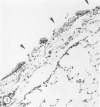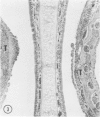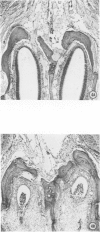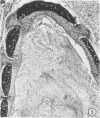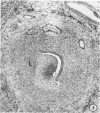Abstract
Hexamethylphosphoramide (HMPA) was given orally (100 mg/kg/day) to: a) conventional rats of Sprague-Dawley and Long-Evans substrains known to have indigenous Mycoplasma pulmonis infection, b) uninfected pathogen-free (PF) Fischer rats, and c) PF and axenic Fischer rats inoculated intranasally with M. pulmonis strains having a wide range of virulence. Treated rats infected with virulent M. pulmonis, either naturally or experimentally, developed severe clinical signs of murine respiratory mycoplasmosis (MRM) with mortalities of 25 to 60% compared to relatively mild MRM and no deaths in untreated, infected controls. Deaths were attributed to unusually severe lung lesions of MRM (extreme neutrophilic exudation into major bronchi and bronchiectasis) with ulceration of respiratory mucosa and hemorrhage. Rhinitis also was increased in severity by HMPA in conventional rats, but not in experimentally infected PF or axenic rats. Severity of otitis media and tracheitis was not affected by HMPA. Incidence of lesions of MRM was unchanged except for increased frequency of gross lung lesions. In the absence of M. pulmonis infection, HMPA treatment of rats caused thinning and microulceration of respiratory epithelium in major bronchi without inflammatory lung disease. Other effects induced by HMPA, with or without the infection, were destruction and fibrous replacement of olfactory epithelium, atrophy of testes, and reduced weight gains. It was concluded that HMPA markedly enhances both rate of progression and severity of the pneumonia while inconsistently potentiating the rhinitis of MRM in rats. Previous studies of HMPA are emphasized as an additional example in which the synergistic effects of an experimental chemical and an indigenous pathogen of laboratory rats have given misleading experimental results.
Full text
PDF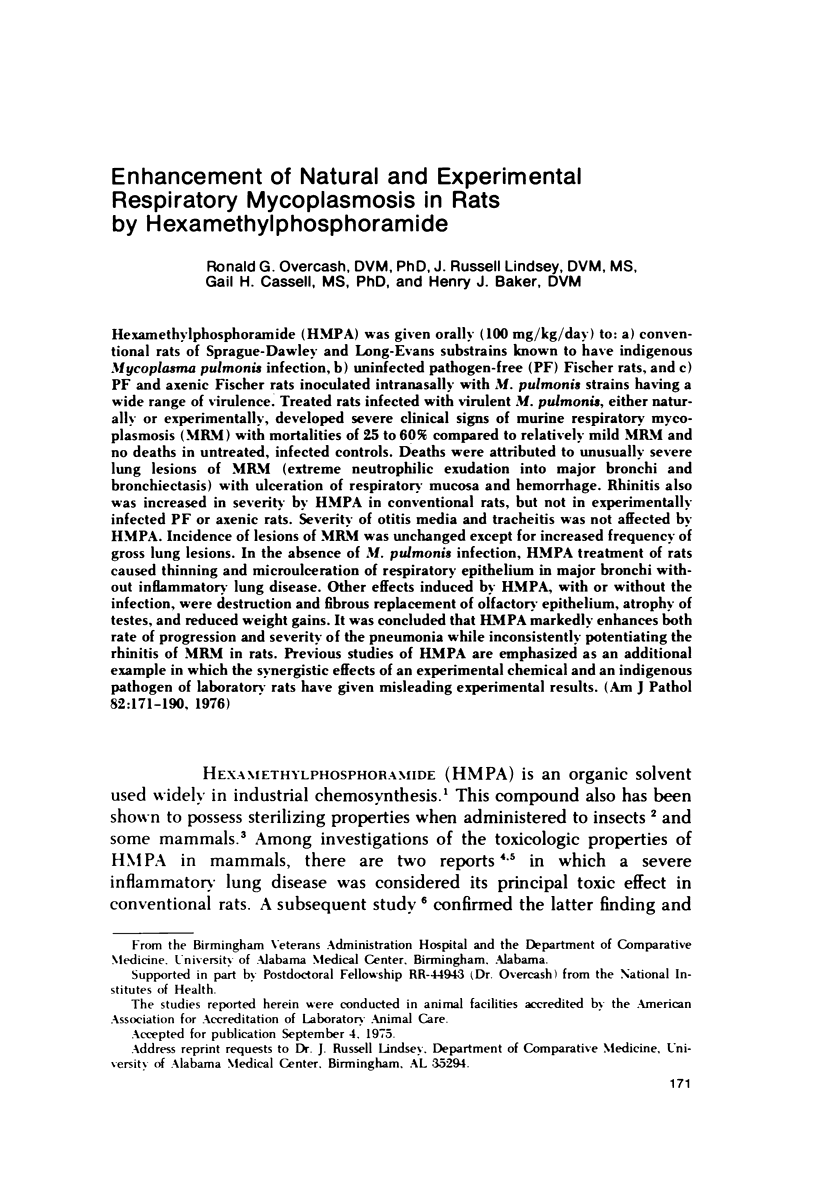
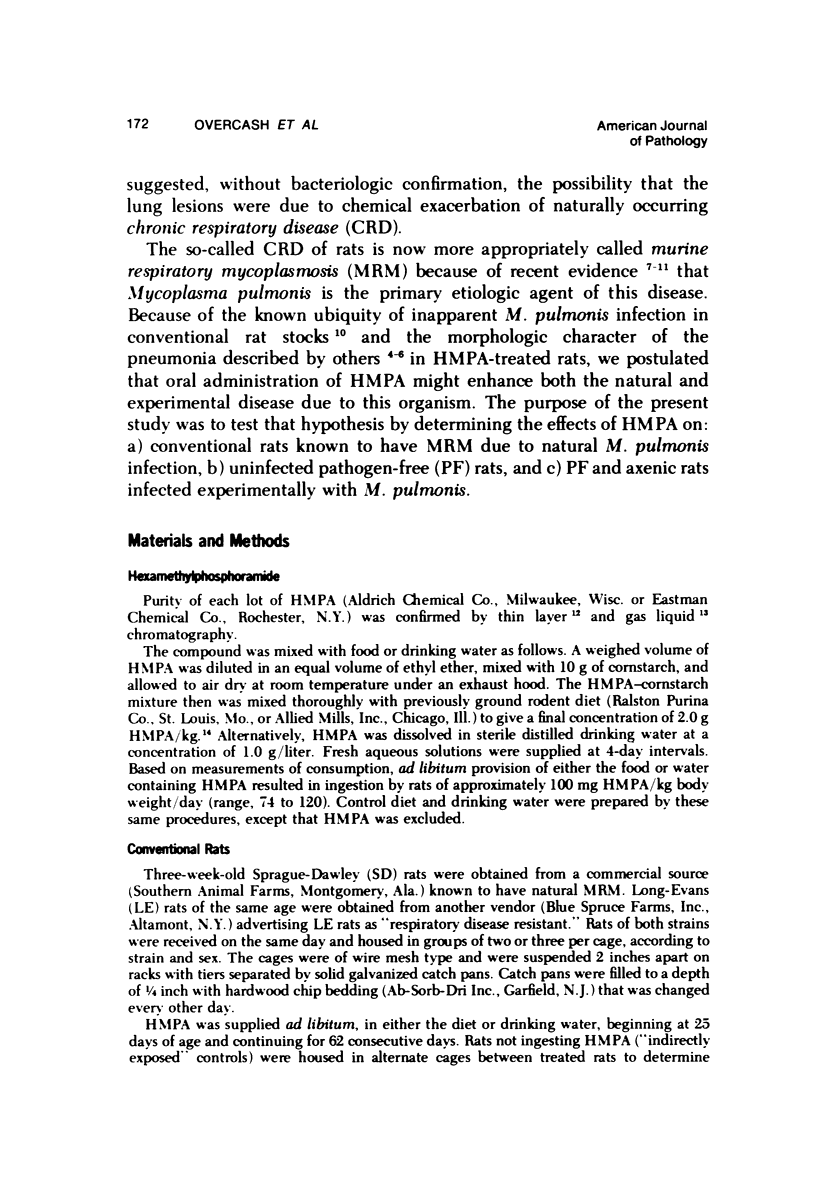
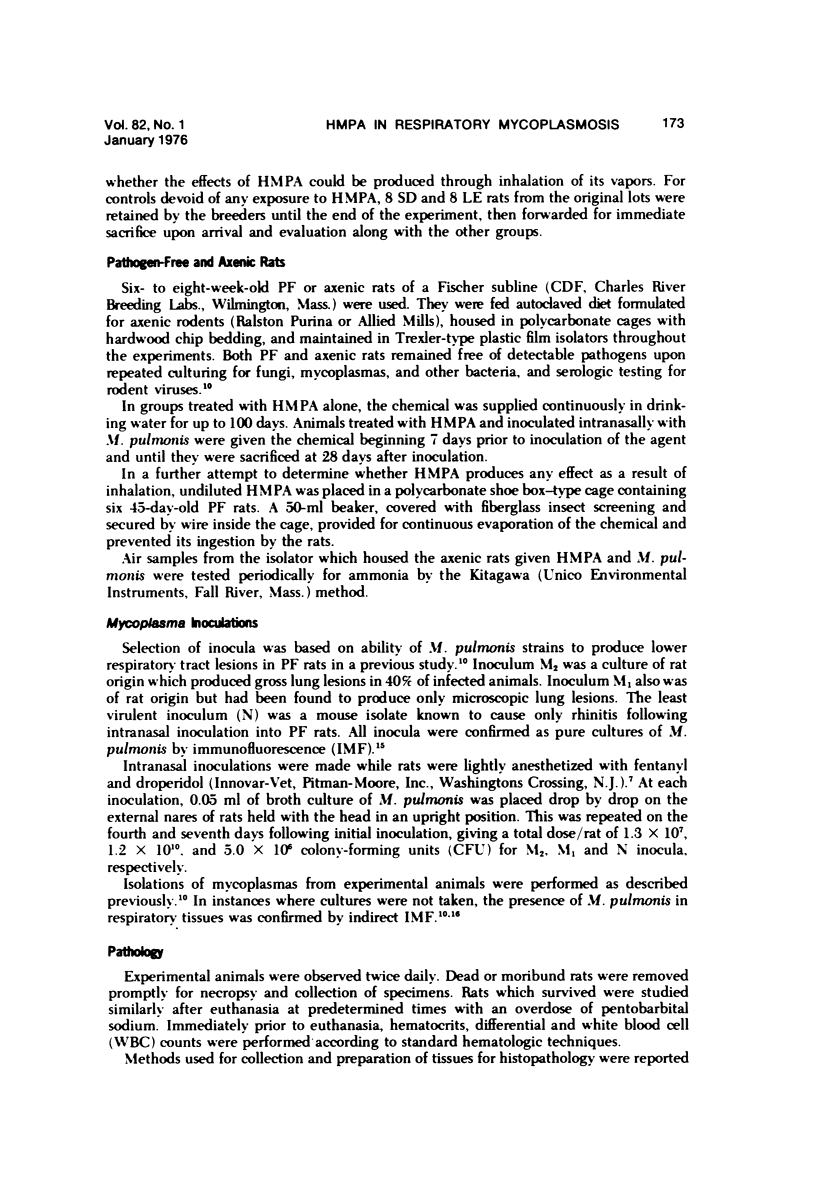
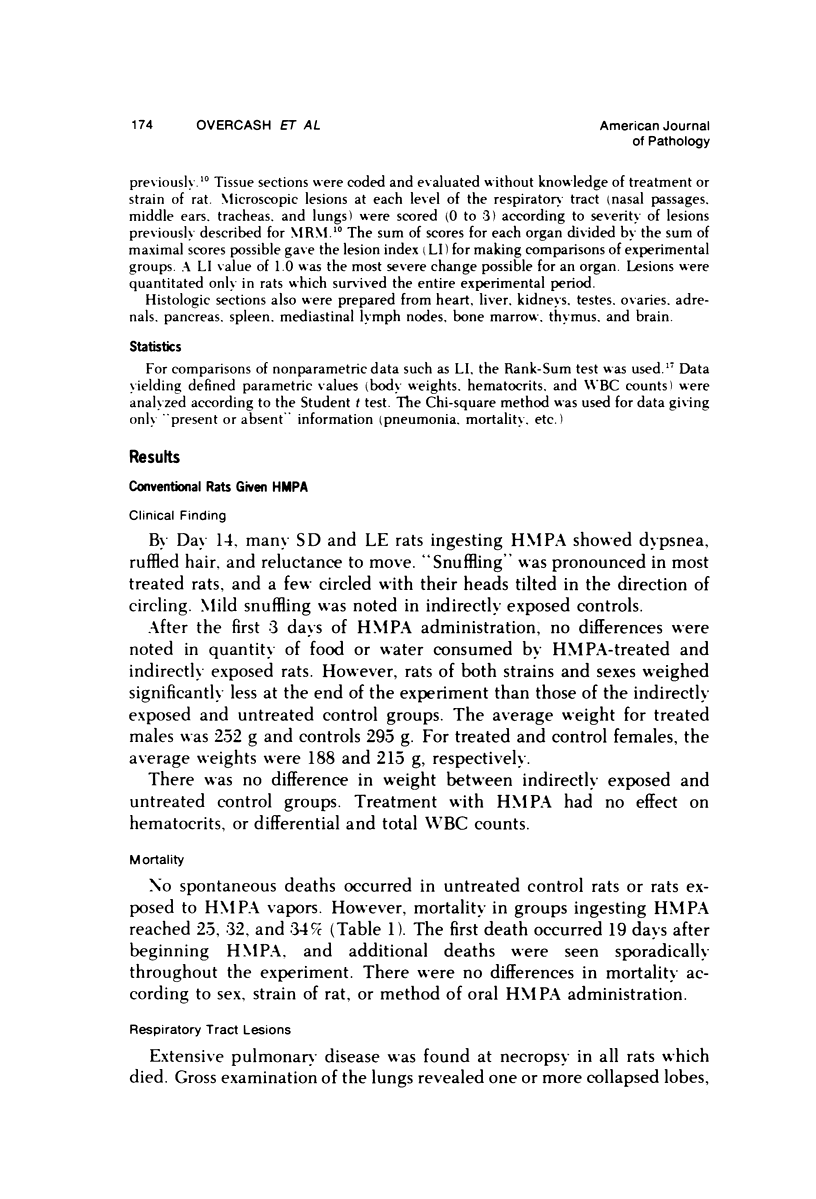

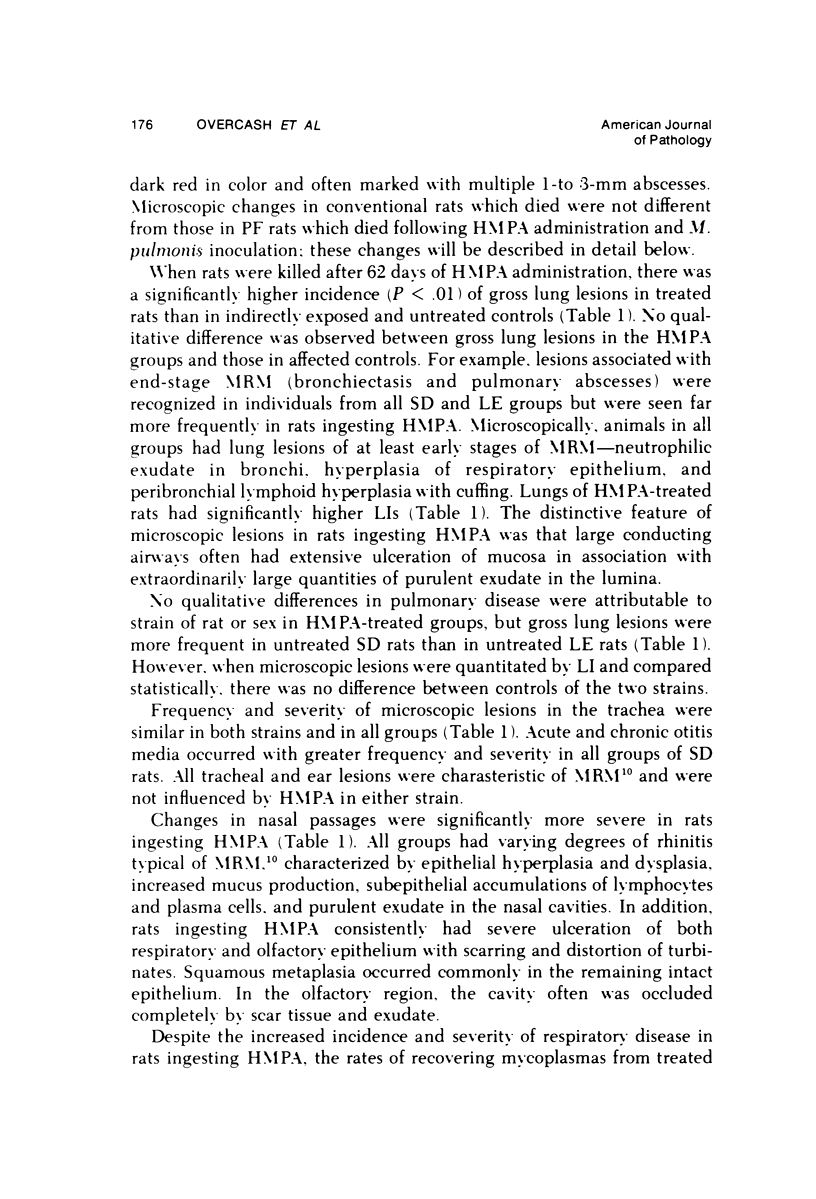
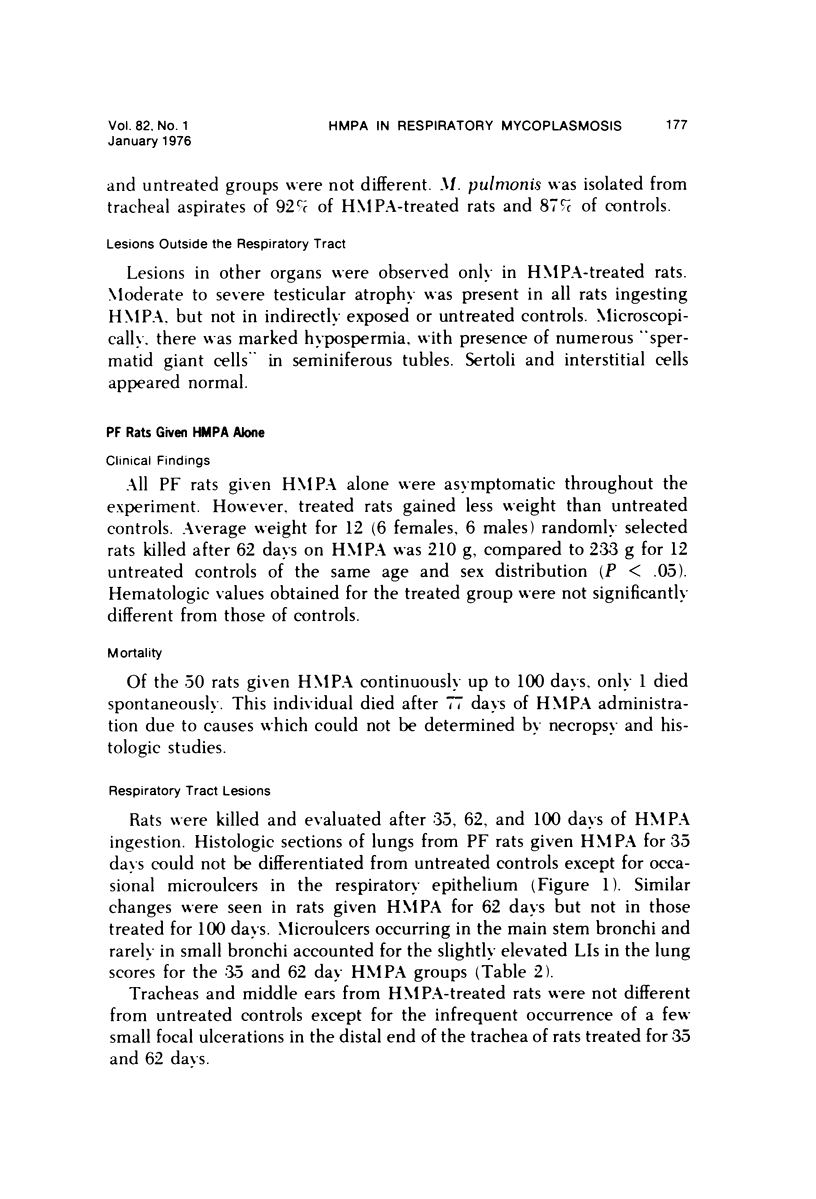
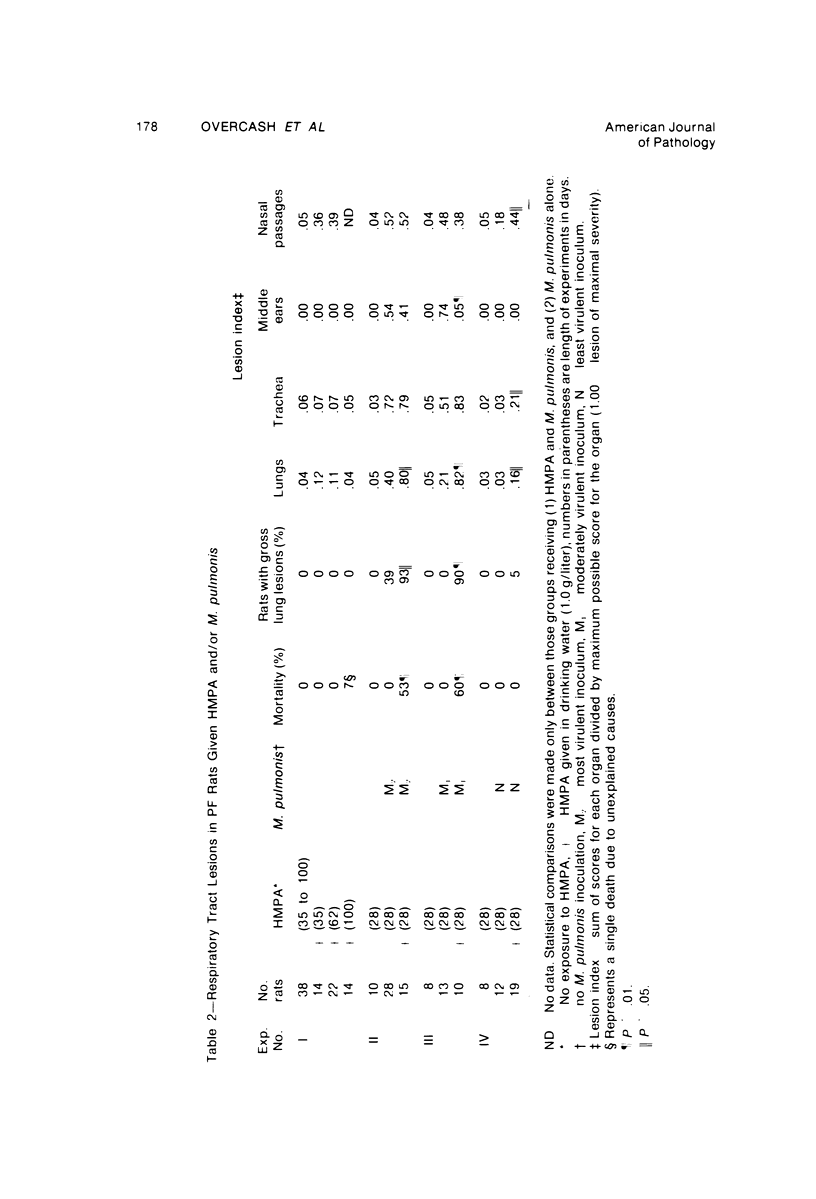

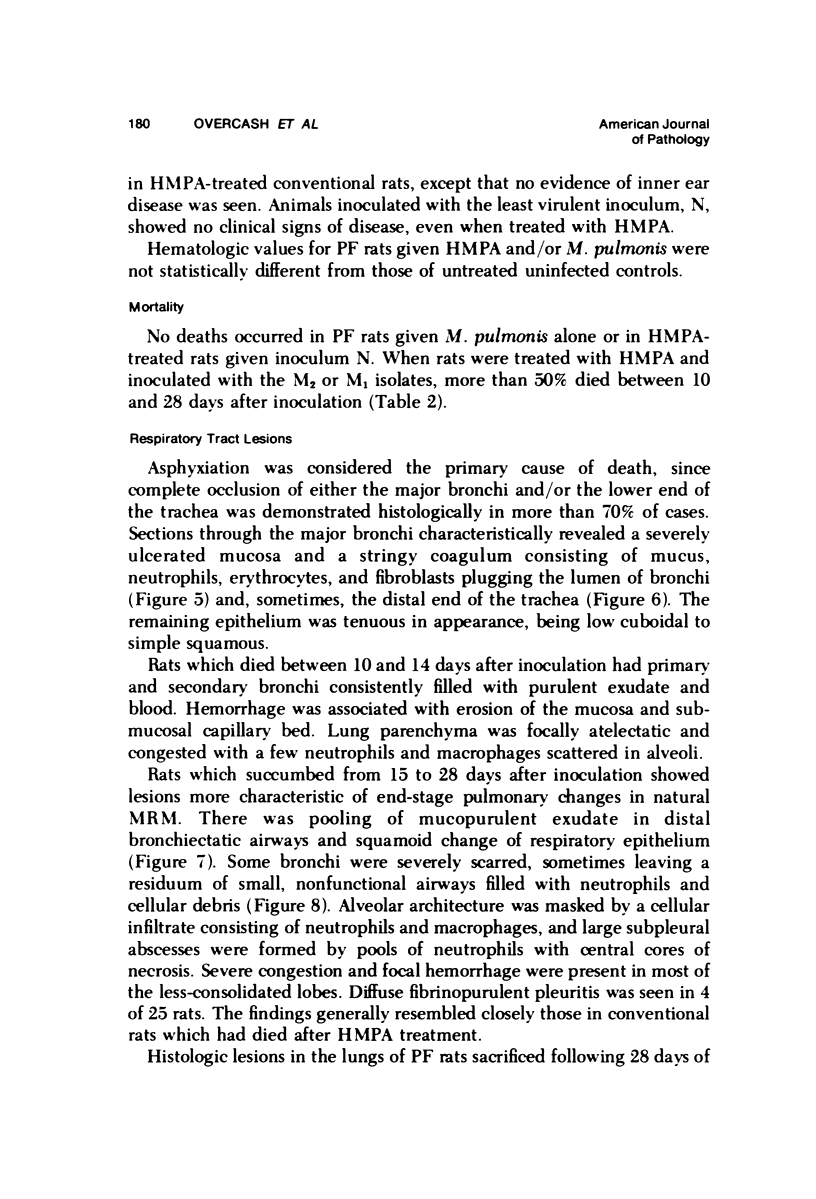
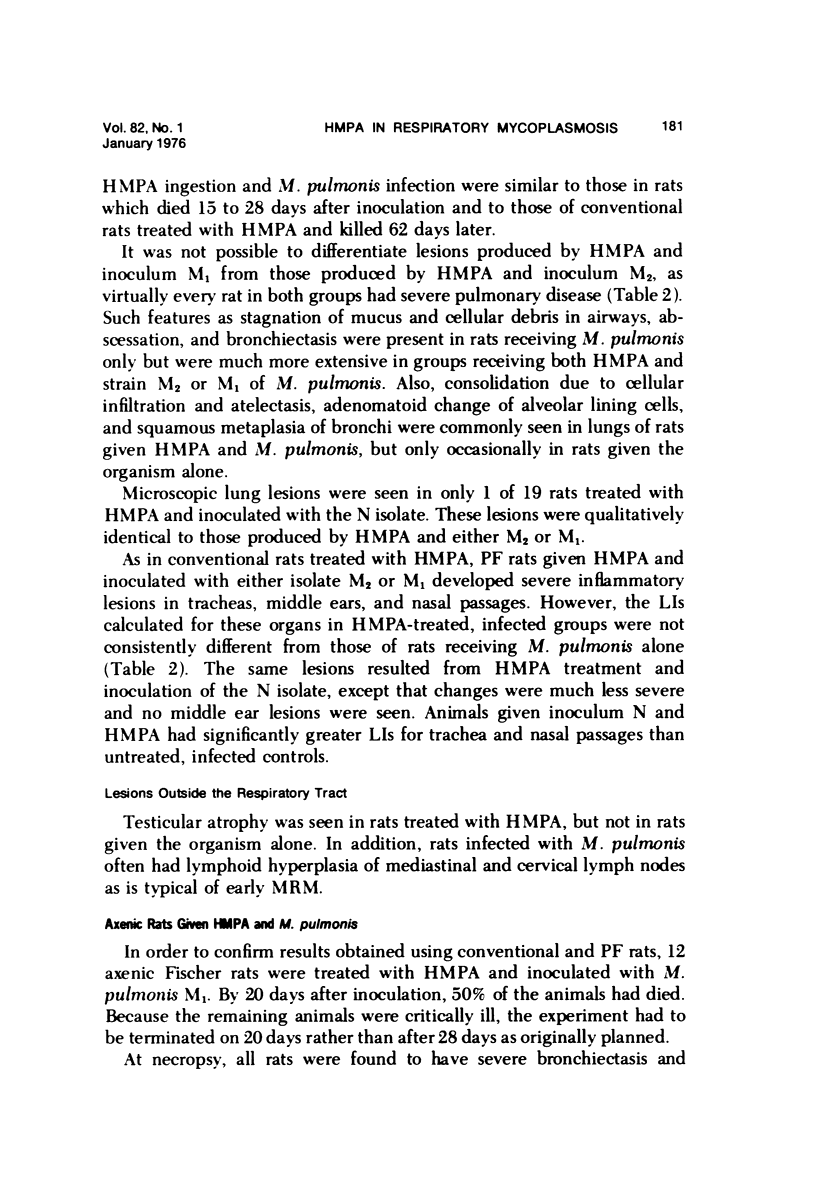

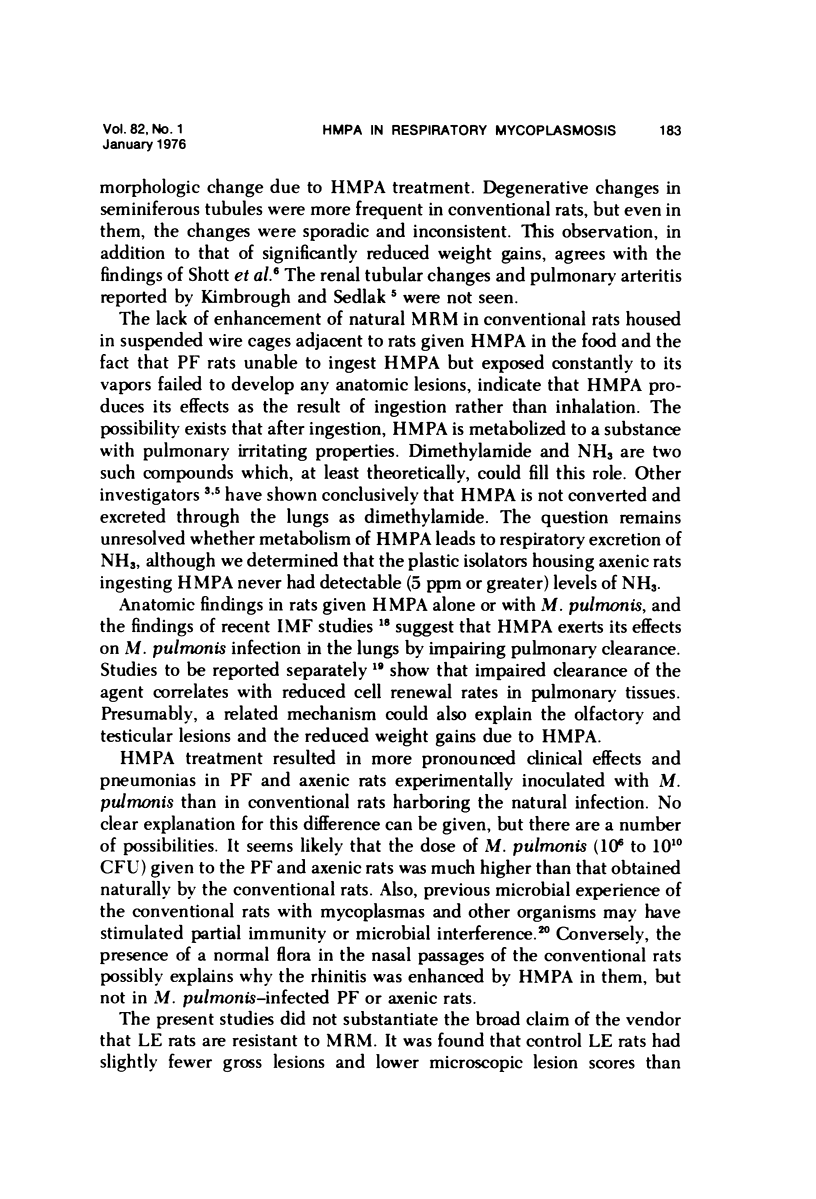
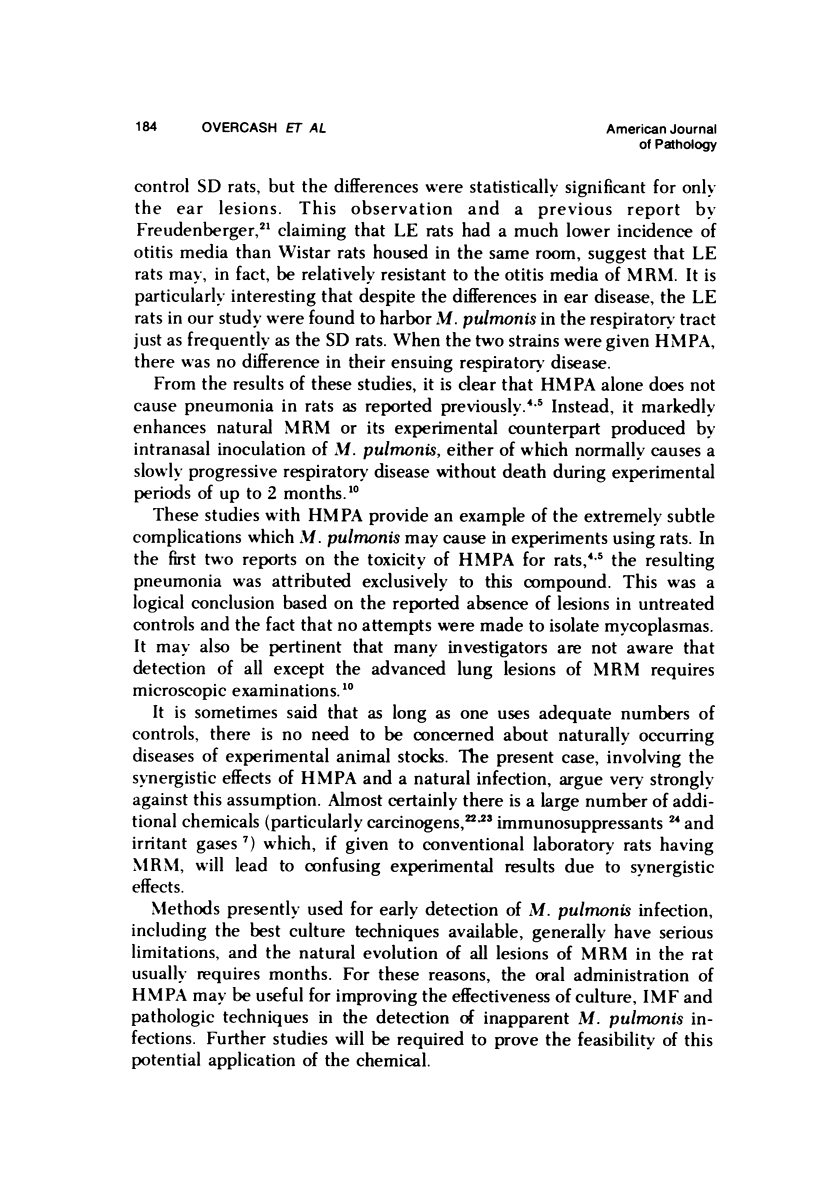
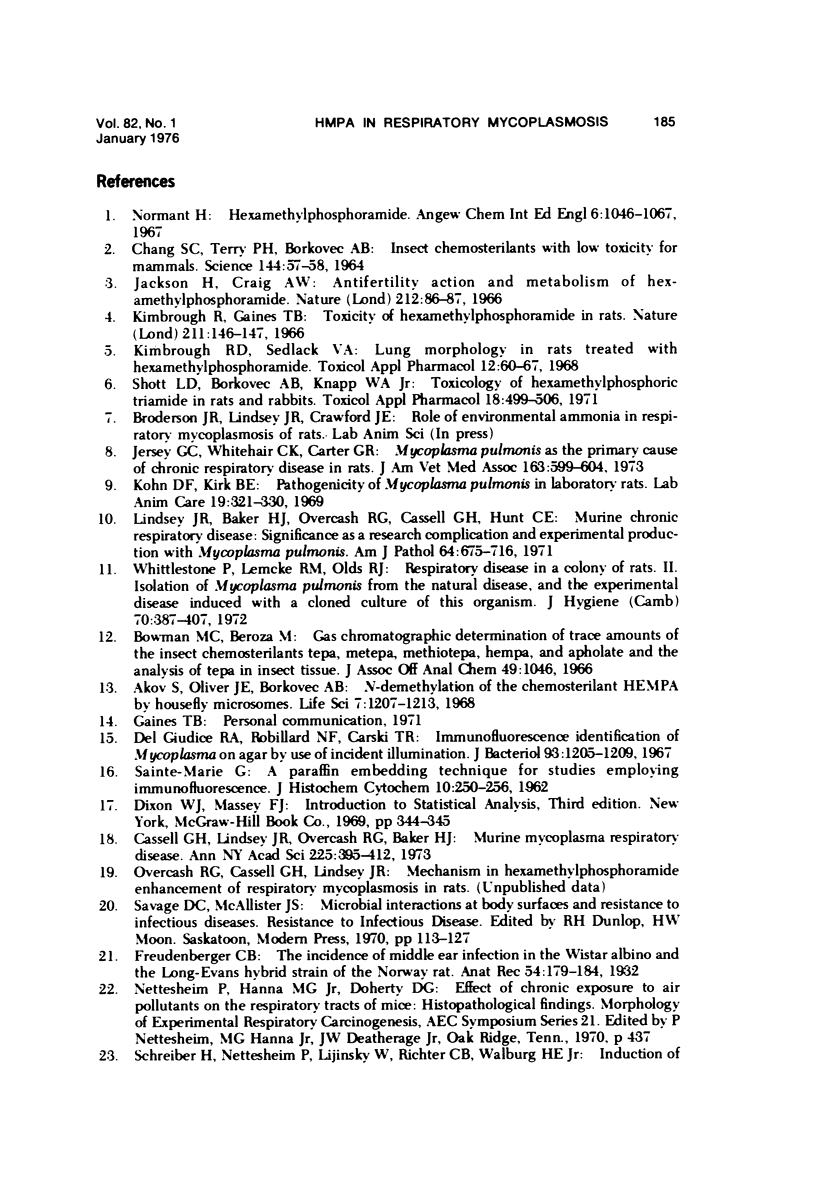
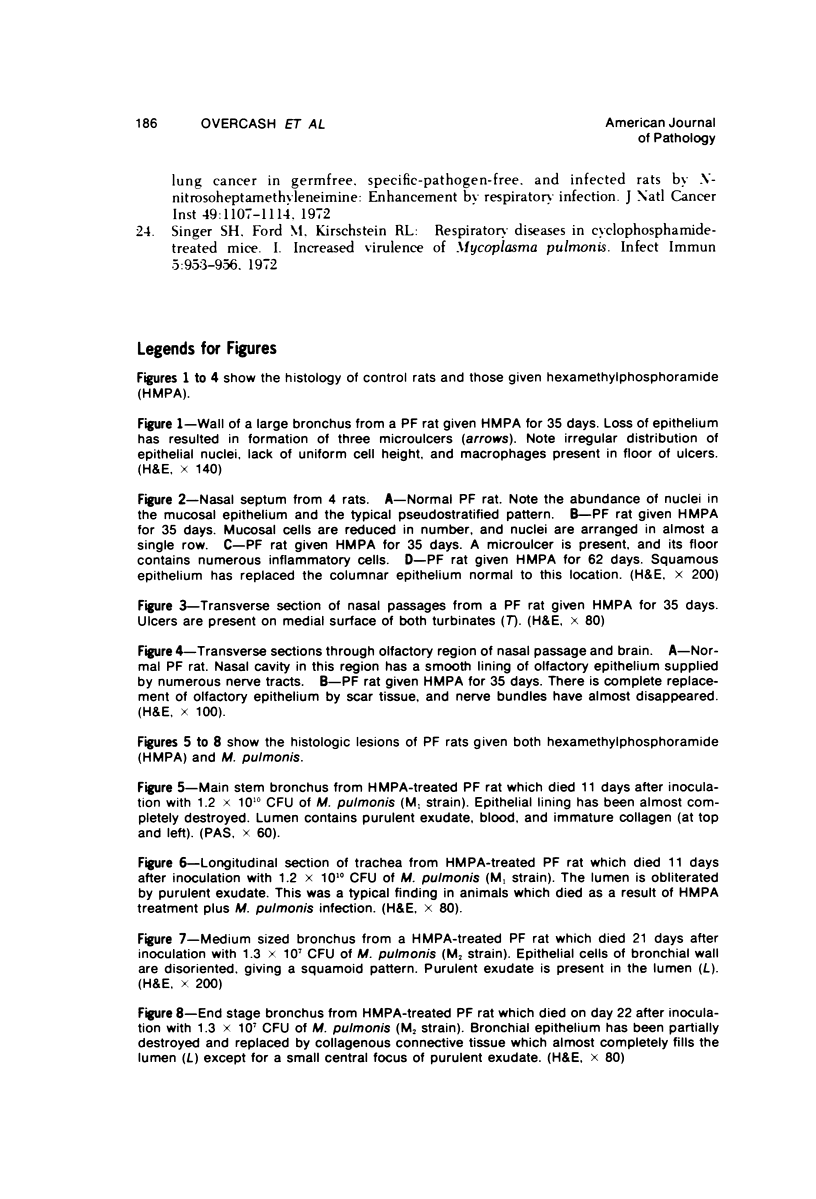
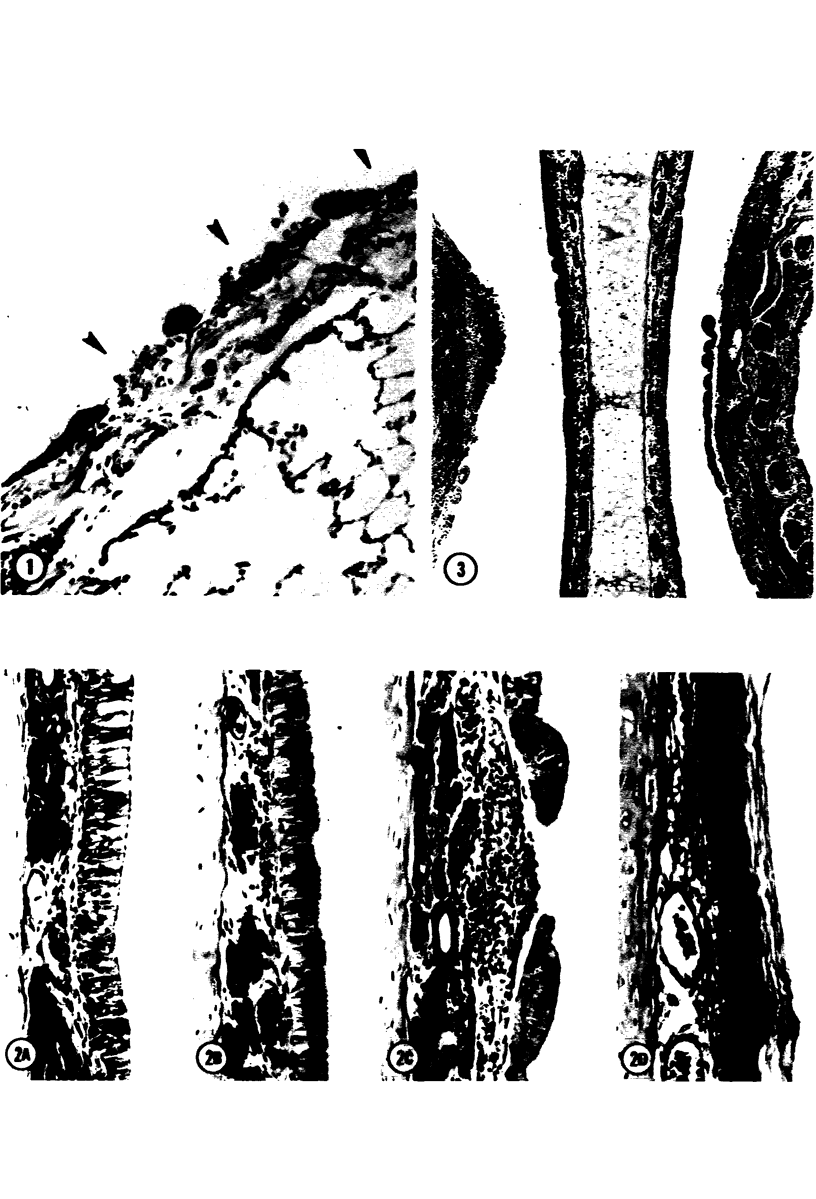
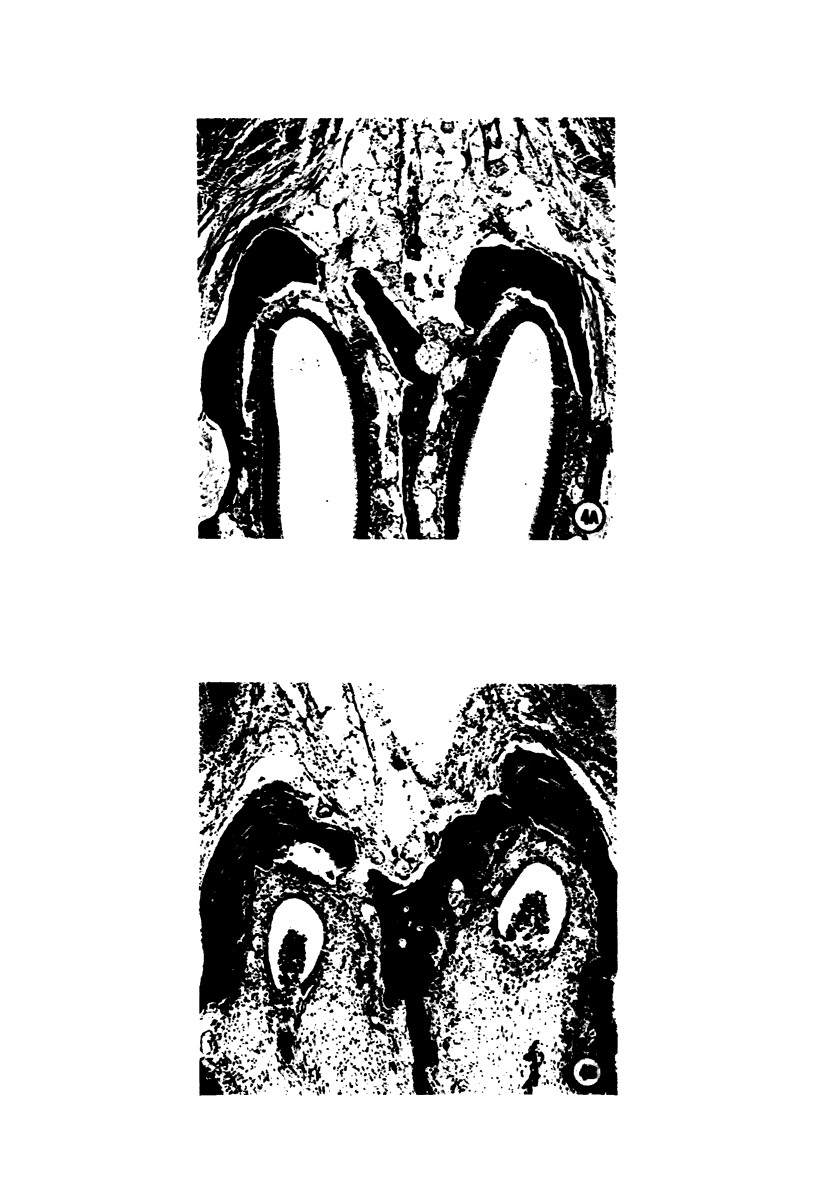

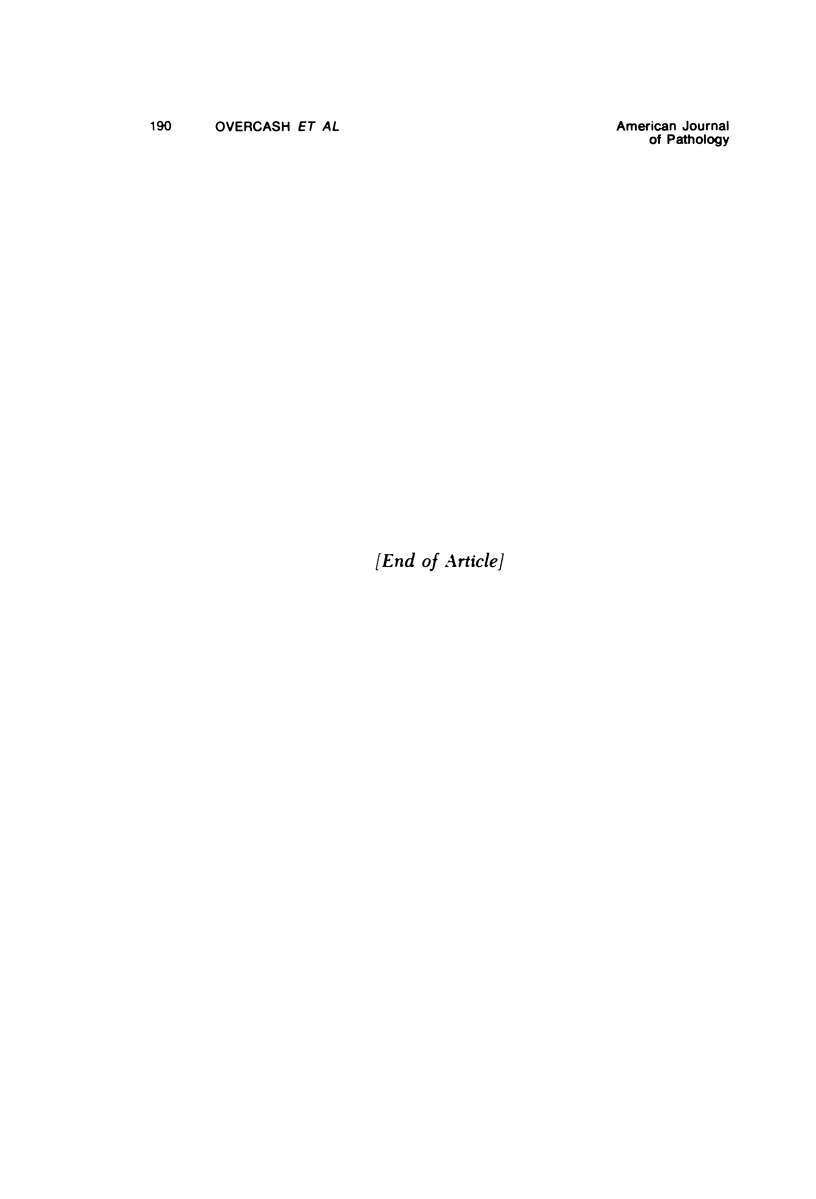
Images in this article
Selected References
These references are in PubMed. This may not be the complete list of references from this article.
- Akov S., Oliver J. E., Borkovec A. B. N-demethylation of the chemosterilant HEMPA by ouse fly microscomes. Life Sci. 1968 Nov 15;7(22):1207–1213. doi: 10.1016/0024-3205(68)90232-4. [DOI] [PubMed] [Google Scholar]
- CHANG S. C., TERRY P. H., BORKOVEC A. B. INSECT CHEMOSTERILANTS WITH LOW TOXICITY FOR MAMMALS. Science. 1964 Apr 3;144(3614):57–58. doi: 10.1126/science.144.3614.57. [DOI] [PubMed] [Google Scholar]
- Del Giudice R. A., Robillard N. F., Carski T. R. Immunofluorescence identification of Mycoplasma on agar by use of incident illumination. J Bacteriol. 1967 Apr;93(4):1205–1209. doi: 10.1128/jb.93.4.1205-1209.1967. [DOI] [PMC free article] [PubMed] [Google Scholar]
- Jackson H., Craig A. W. Antifertility action and metabolism of hexamethylphosphoramide. Nature. 1966 Oct 1;212(5057):86–87. doi: 10.1038/212086a0. [DOI] [PubMed] [Google Scholar]
- Jersey G. C., Whitehair C. K., Carter G. R. Mycoplasma pulmonis as the primary cause of chronic respiratory disease in rats. J Am Vet Med Assoc. 1973 Sep 15;163(6):599–604. [PubMed] [Google Scholar]
- Kimbrough R. D., Sedlak V. A. Lung morphology in rats treated with hexamethylphosphoramide. Toxicol Appl Pharmacol. 1968 Jan;12(1):60–67. doi: 10.1016/0041-008x(68)90176-2. [DOI] [PubMed] [Google Scholar]
- Kimbrough R., Gaines T. B. Toxicity of hexamethylphosphoramide in rats. Nature. 1966 Jul 9;211(5045):146–147. doi: 10.1038/211146a0. [DOI] [PubMed] [Google Scholar]
- Kohn D. F., Kirk B. E. Pathogenicity of Mycoplasma pulmonis in laboratory rats. Lab Anim Care. 1969 Jun;19(3):321–330. [PubMed] [Google Scholar]
- Lindsey J. R., Baker H. J., Overcash R. G., Cassell G. H., Hunt C. E. Murine chronic respiratory disease. Significance as a research complication and experimental production with Mycoplasma pulmonis. Am J Pathol. 1971 Sep;64(3):675–708. [PMC free article] [PubMed] [Google Scholar]
- Loew F. M., Martin C. L., Dunlop R. H., Mapletoft R. J., Smith S. I. Naturally-occurring and experimental thiamin deficiency in cats receiving commercial cat food. Can Vet J. 1970 Jun;11(6):109–113. [PMC free article] [PubMed] [Google Scholar]
- Schreiber H., Nettesheim P., Lijinsky W., Richter C. B., Walburg H. E., Jr Induction of lung cancer in germfree, specific-pathogen-free, and infected rats by N-nitrosoheptamethyleneimine: enhancement by respiratory infection. J Natl Cancer Inst. 1972 Oct;49(4):1107–1114. [PubMed] [Google Scholar]
- Shott L. D., Borkovec A. B., Knapp W. A., Jr Toxicology of hexamethylphosphoric triamide in rats and rabbits. Toxicol Appl Pharmacol. 1971 Mar;18(3):499–506. doi: 10.1016/s0041-008x(71)80002-9. [DOI] [PubMed] [Google Scholar]
- Whittlestone P., Lemcke R. M., Olds R. J. Respiratory disease in a colony of rats. II. Isolation of Mycoplasma pulmonis from the natural disease, and the experimental disease induced with a cloned culture of this organism. J Hyg (Lond) 1972 Sep;70(3):387–407. doi: 10.1017/s0022172400062975. [DOI] [PMC free article] [PubMed] [Google Scholar]



